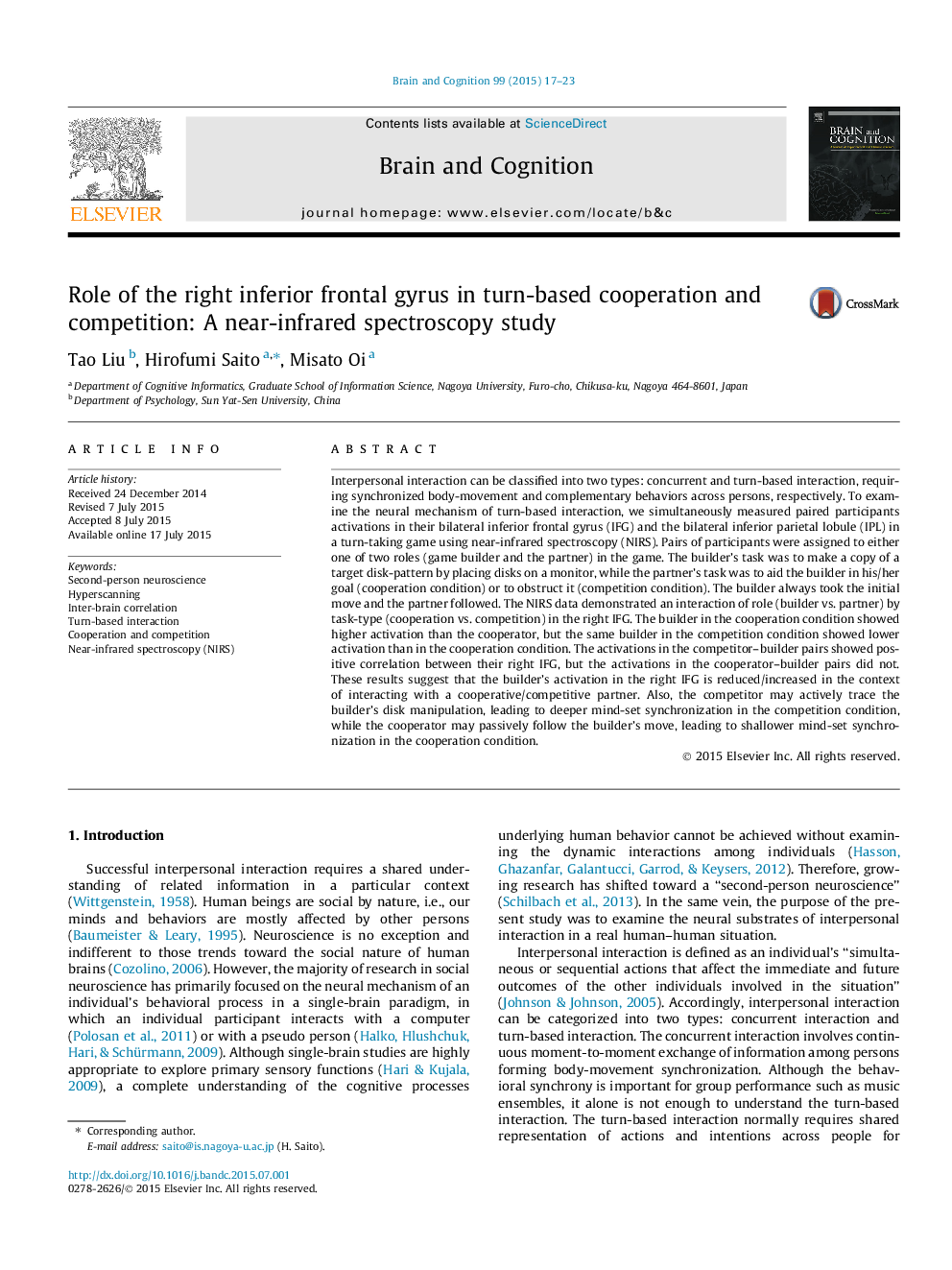| کد مقاله | کد نشریه | سال انتشار | مقاله انگلیسی | نسخه تمام متن |
|---|---|---|---|---|
| 923944 | 1473972 | 2015 | 7 صفحه PDF | دانلود رایگان |
• We examine the neural bases of turn-based cooperation and competition using NIRS.
• Pairs of subjects played a turn-taking game with two roles (builder and partner).
• Builder’s right IFG activity increases in cooperation and decreases in competition.
• Competitor–builder pairs show positive inter-brain correlation in right IFG.
Interpersonal interaction can be classified into two types: concurrent and turn-based interaction, requiring synchronized body-movement and complementary behaviors across persons, respectively. To examine the neural mechanism of turn-based interaction, we simultaneously measured paired participants activations in their bilateral inferior frontal gyrus (IFG) and the bilateral inferior parietal lobule (IPL) in a turn-taking game using near-infrared spectroscopy (NIRS). Pairs of participants were assigned to either one of two roles (game builder and the partner) in the game. The builder’s task was to make a copy of a target disk-pattern by placing disks on a monitor, while the partner’s task was to aid the builder in his/her goal (cooperation condition) or to obstruct it (competition condition). The builder always took the initial move and the partner followed. The NIRS data demonstrated an interaction of role (builder vs. partner) by task-type (cooperation vs. competition) in the right IFG. The builder in the cooperation condition showed higher activation than the cooperator, but the same builder in the competition condition showed lower activation than in the cooperation condition. The activations in the competitor–builder pairs showed positive correlation between their right IFG, but the activations in the cooperator–builder pairs did not. These results suggest that the builder’s activation in the right IFG is reduced/increased in the context of interacting with a cooperative/competitive partner. Also, the competitor may actively trace the builder’s disk manipulation, leading to deeper mind-set synchronization in the competition condition, while the cooperator may passively follow the builder’s move, leading to shallower mind-set synchronization in the cooperation condition.
Journal: Brain and Cognition - Volume 99, October 2015, Pages 17–23
